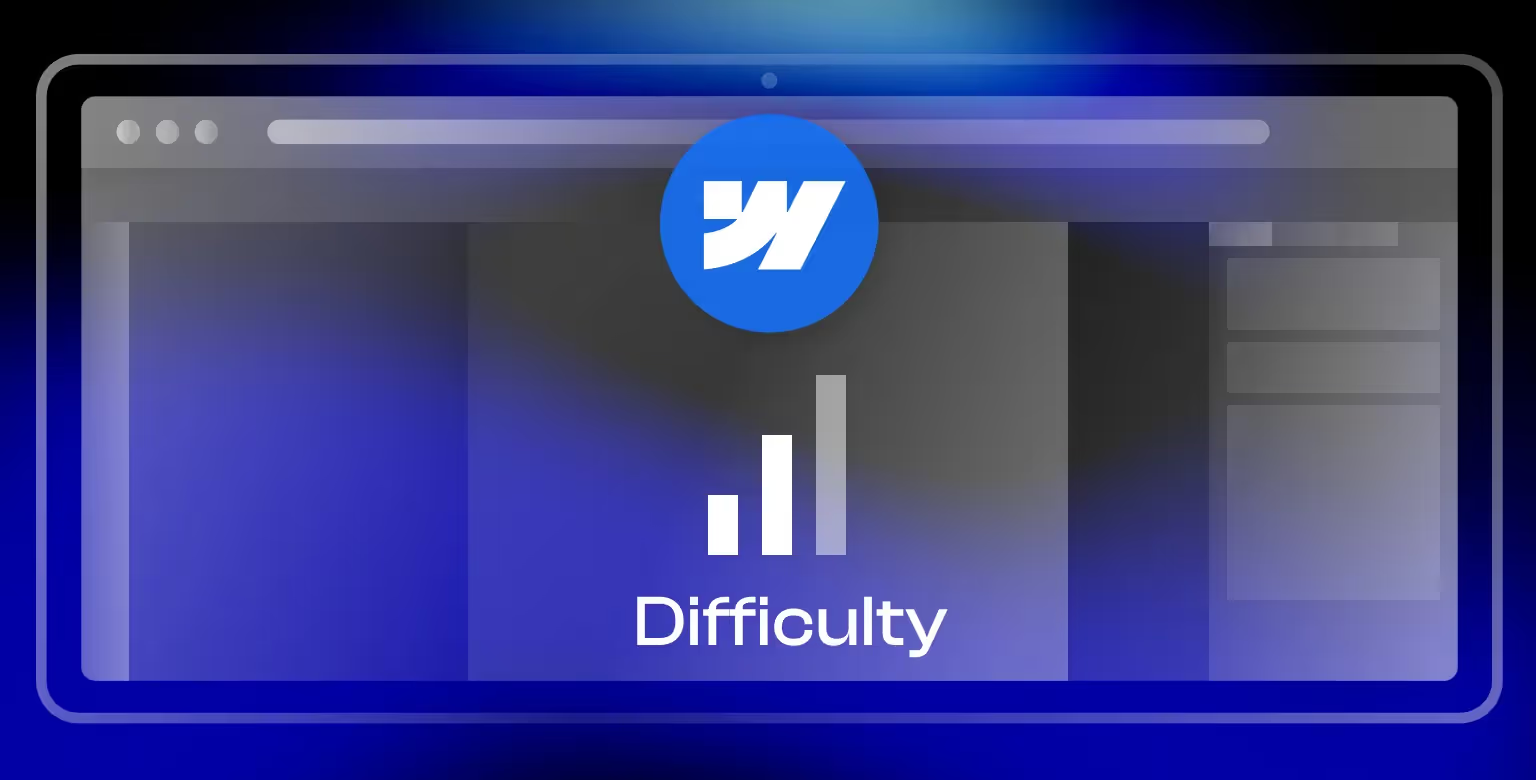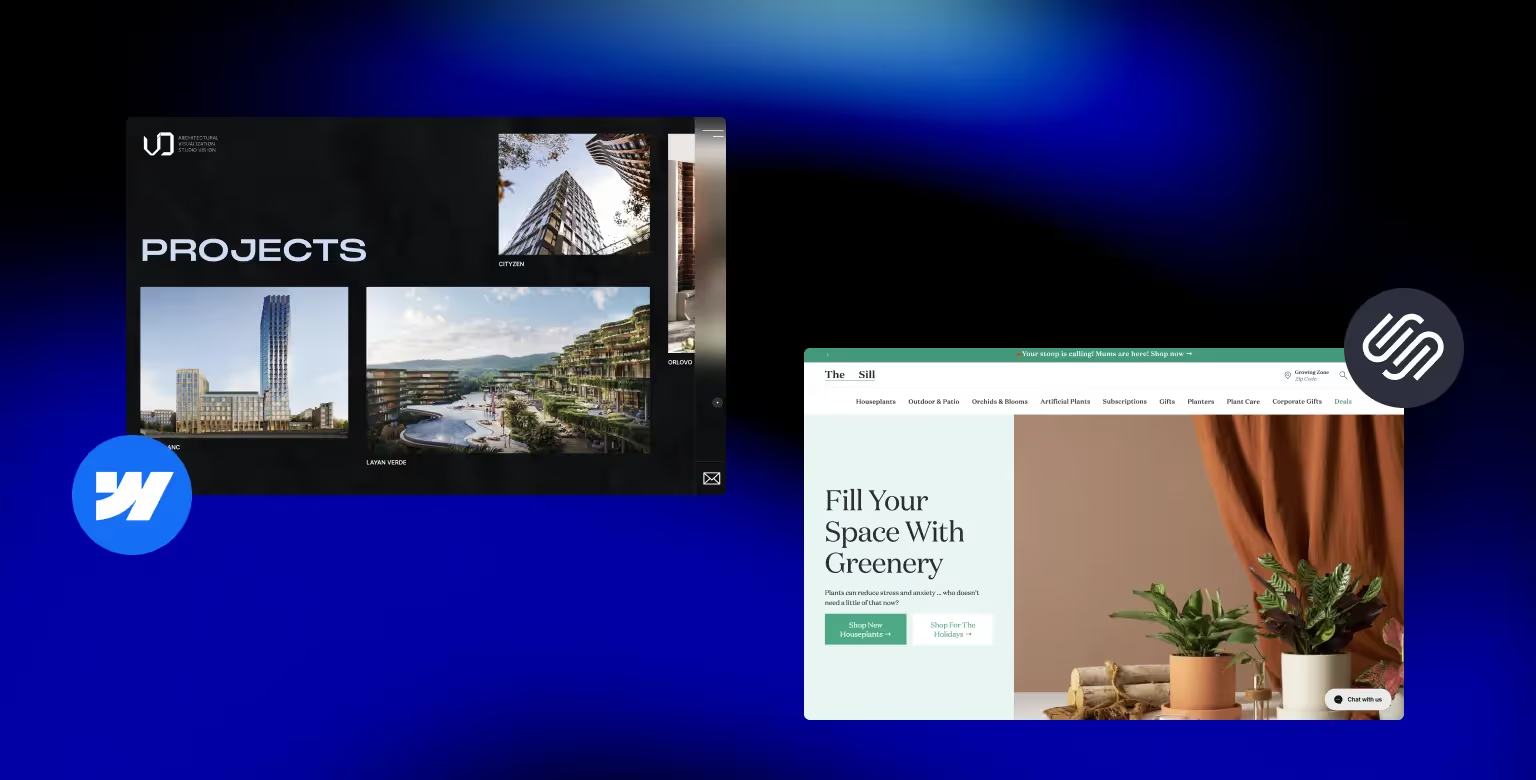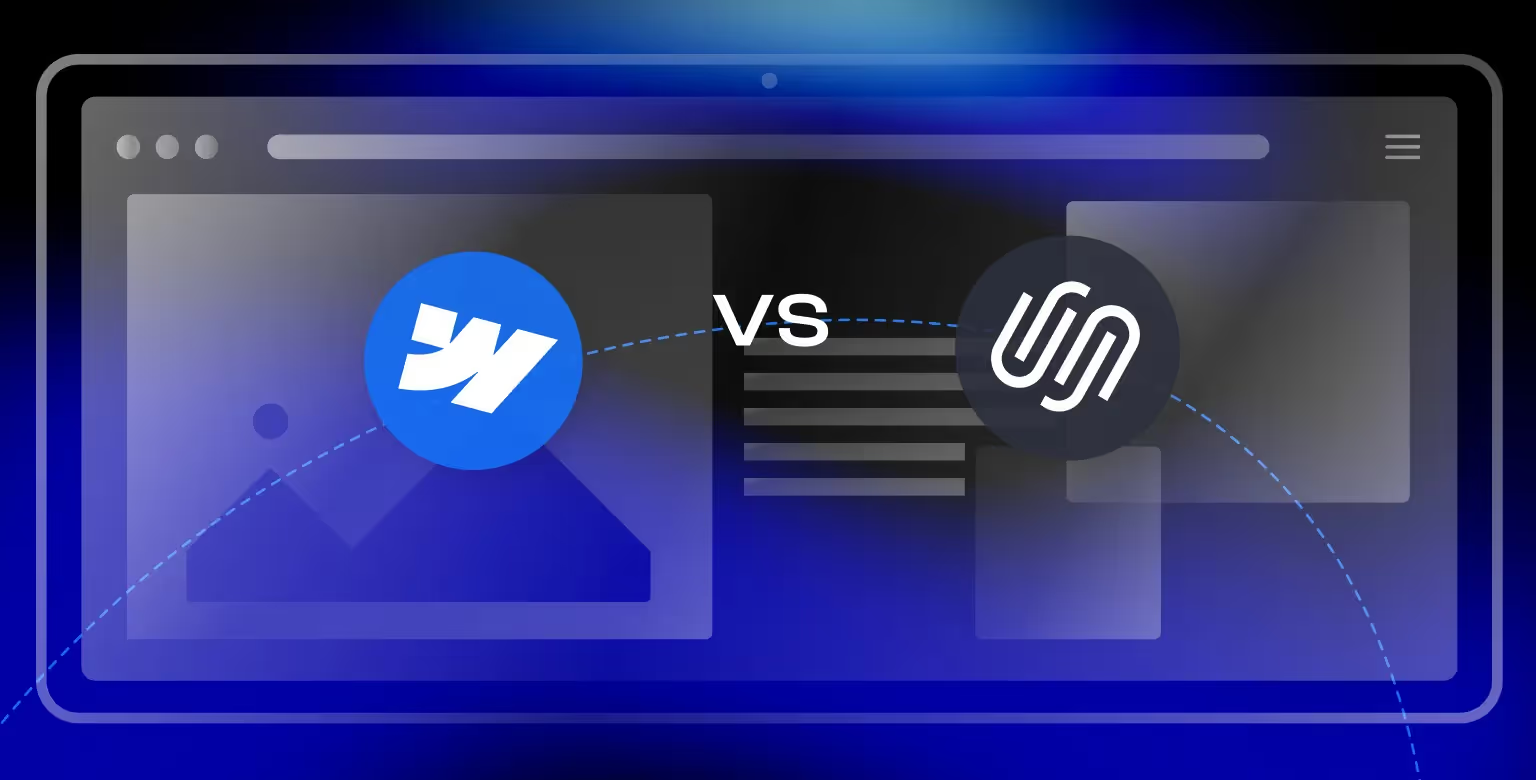Imagine this. You’re a business owner who just launched their business. Your next step is building a website and that's when start researching easy platforms to host your site on. There are many options, but two names dominate the results: Webflow and Squarespace.
Squarespace is known for quick setup using polished templates. Webflow is chosen when you want design freedom and a website that stands apart.
This article gives you a clear comparison of usability, design options, e-commerce, pricing, and growth potential so you can pick the platform that supports your goals today and as your business grows.
Ease of Use and Learning Curve
When evaluating ease of use, it's crucial to consider your long-term goals and technical comfort level. If you envision a highly customized website with complex functionalities and room for future growth, Webflow's learning curve might be a worthwhile investment.
Squarespace Ease of Use

If you’re under a deadline and time is of the essence, you’ll want to avoid a steep learning curve. Squarespace is known for being as easy as it gets. All you have to do is choose a template, replace the content, and hit publish. Many founders launch a working site over a weekend.
That template-based approach is perfect when your website doesn’t need to add complexity into your site. Although once you want more control over marketing funnels or conversion paths, those limitations become real blockers.
Webflow Ease of Use
Webflow gives you that missing control with a drag-and-drop inteface, but at a price. It’s not particularly hard, but it’s also not the easiest to use. You need to learn structure (HTML), styling (CSS), and a bit of logic (JS) to make it work. The more effort you invest up front, the more ready your site will be for advanced marketing.
If learning Webflow isn’t in the cards, partnering with a Webflow agency removes the barrier while still giving you the benefits.
Verdict: Squarespace is the simplest option when you just need a site live quickly to validate your offer. If your website needs to help you sell, market, and scale, Webflow pays off quickly.

Design Flexibility
Squarespace Design Options
Squarespace keeps design structured and simple. You browse through a marketplace of templates, pick one, swap in your brand colors, images and text. That's it. You’re ready to launch. The negative side of that is that you’re always working within the boundaries of that template. If you want to add a new layout that breaks the existing grid or add in unique interaction? Tough luck. It won’t happen.
To illustrate the design possibilities here's an example of Squarespace: The Sill. It's a fairly basic e-commerce website with simple layouts. It gets the job done, but one can argue, not the whole job.
Webflow Design Flexibility
When talking about the design freedom, Webflow is the opposite of Squarespace. You can choose a template, but more often than not, the site is built from the ground up. Every layout, animation, and interaction can be shaped around your brand instead of adapting your brand to a template.
To illustrate the design possibilities here's an example of Webflow: Vis-on. It's a site of an architectural visualization studio that works well as a portfolio website.
Verdict: If you want full creative control and a site that feels unique to your brand, Webflow wins. If speed and simplicity matter more than standing out, Squarespace keeps things straightforward.

Features and Functionality
Squarespace Features
Squarespace covers the basics: static pages, simple blog and the most basic of the SEO settings. E-commerce functionality is also lightweight. It’s built for straightforward setups where the website supports the business but isn’t driving complex campaigns.
Features are good for:
- Solo founders
- Simple product offerings
- Minimal integrations
Webflow Features
Webflow takes things a step further. Its CMS is flexible, scalable and supports robust content structures with different CMS collections pointing to each other. Some example use cases include case studies, product databases, and dynamic landing pages for PPC campaigns. The sites built on the tool can be enhanced through integrations such as CRMs (HubSpot, Salesforce, etc.) and any other tools through automation tools such as Zapier and Make.
Features are good for:
- Content and driven SEO
- Conversion-focused funnels
- Businesses planning to automate
Verdict: Choose Squarespace if your website is informational and static. Choose Webflow if marketing, integrations, or automation are core to your growth.
Pricing and Value
Squarespace Pricing
Squarespace keeps pricing simple. One plan includes hosting, templates, and the basics you need to be online. When comparing annual plans, Squarespace's website plans start at $16 per month, and e-commerce at $26 per month.
Best when:
- You only need a few static pages
- Website isn't driving revenue yet
- You want the lowest upfront cost
Webflow Pricing
Webflow pricing is more complex and your investment to use the tool will purely depend on the used functionality. Depending if you need a purely static site, a CMS-driven one, or an e-commerce shop, you'll have to choose different site plans. Webflow's plans start at $14 per month on an anual basis and e-commerce plans at $29 per month.
Best when:
- Your site needs to do more than exist.
- You plan to bring a ton of traffic on site through content
- You need to set up integrations and automations to grow
Verdict: Squarespace is the affordable launch option. Webflow delivers stronger long-term value once your website becomes a core part of acquiring customers and revenue.

Final Thoughts
Webflow and Squarespace can both help you get online. The real question is what you expect your website to do for your business.
If speed and simplicity are the priority, Squarespace gets you live without much heavy lifting.
If your website needs to differentiate your brand, support marketing, and scale with your business, Webflow is the safer long-term decision.
Not bought by either, but leaning more towards Squarespace, read our guide on Squarespace alternatives. Prefer platforms closer to Webflow, explore our guide on Webflow alternatives.
Verdict: We see it over and over with growing companies: they outgrow Squarespace and end up rebuilding in Webflow anyway. Starting with the platform that supports your future saves you time, budget, and headaches.
Ready to build your site on Webflow? Contact Tilipman Digital for a free consultation. We'll discuss your business, the site and explore how we can help you turn it into an ROI driving asset.




